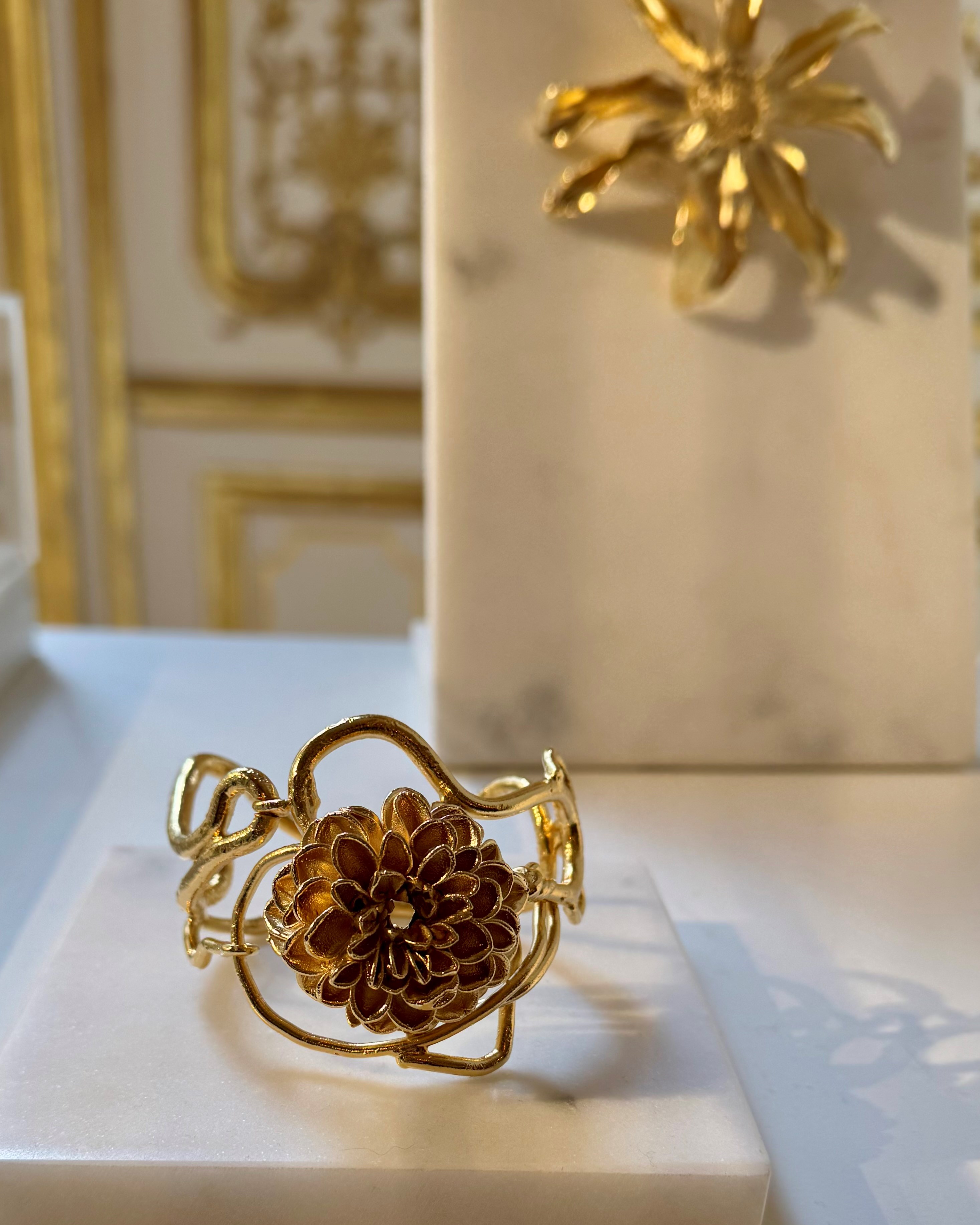Design or Collectable Comfort?
05 November 2025
ShareThe collectable design world, fueled by rarity and provocation, seems to be entering a new phase in which comfort is no longer seen as a compromise. At Design Miami Paris and PAD London, even the most conceptual presentations looked distinctly more inhabitable. The preview of Design Miami Paris drew an impressive turnout, with many well-known collectors among the first to arrive. The third edition of this new flagship took place during Art Basel Paris at Karl Lagerfeld’s former home – a massive 18th-century hôtel particulier. The in-situ format remains the fair’s defining strength, placing ultra-contemporary furniture within a Rococo setting that perhaps some collectors could imagine translating into their own environments.
1_T638979446737861935.jpg)
Galerie Mitterrand at Design Miami Paris 2025
Image courtesy of Galerie Mitterrand
Elegant metals, expressive ceramics, and fantastical sculptures brought playfulness to the historic setting. Rooms were impeccably arranged, with some galleries showcasing smaller pieces in vitrines. Patrick Parrish Gallery presented a memorable arrangement of 150 charming brass objects by Viennese designer Carl Auböck. The installation was refreshingly informal, and offered a rare “cash-and-carry” spirit within the otherwise pricey fair.
2_T638979446382321113.jpg)
Patrick Parrish at Design Miami Paris 2025
Image credit - Ivan Erofeev
Carpenters Workshop Gallery presented one of the strongest installations, pairing Wendell Castle seating with oversized lighting by Léa Mestres, organic lamps by Nacho Carbonell, and collector favourite Bélier by Claude and François-Xavier Lalanne. An assembly that I felt was perfectly indicative of what new and seasoned collectors are looking for. Gallery Mitterrand also featured the Lalannes, showing collaborative and solo works spanning the late 1960s through 2015, and introducing jewellery designed by their granddaughter, Julie Hamisky.

Galerie Mitterrand work by Julie Hamisky
Image Creidt - Julia Haney Montanez
For all its grandeur, what stood out most at Design Miami Paris was how grounded the work felt. Even within its Rococo setting, the emphasis was on tactility, something I also noticed the previous week in London, where PAD opened during the city’s buzzy autumn art week. PAD’s high level of curation and polish, even in its purpose-built tent, makes it one of the more enjoyable events of the season. Speaking with several dealers as I walked through the fair, I noted a few common threads, particularly around shifting collector behaviour and the renewed appetite for liveability.
1_T638979445575713716.jpg)
Carpenters Workshop Gallery at Design Miami Paris 2025
Image credit - Ivan Erofeev
Sebastian Holt, director of the London and Stockholm-based Modernity Gallery, described this year’s edition as “relationship-driven.” Most of their visitors, he said, were returning clients who already knew the gallery and came with clear intentions. “It was handy that we brought warm, comfortable pieces,” Holt noted. “There was far more interest in seating than in purely sculptural works. The Valet chair usually draws attention, but this year it was the sofas and daybeds – pieces people can actually live with. Upholstered, comfortable furniture, and warm leather seem to be what people are leaning toward. Collectable liveability might be the answer right now.”
Curious to hear more about emerging collector preferences, I spoke with Krista van Oudheusden, owner of AtKris Studio and exhibitor at Treasure House Fair 2025. Collecting, she told us, is no longer shaped by the gravitational pull of “what everyone else wants.” A younger generation is stepping in, bringing new priorities: authenticity, narrative, and transparency. Provenance and pricing are no longer backstage topics; they’ve become part of the buying experience itself. She also noted a move toward individuality within historical styles. Renewed interest in Art Deco, which was apparent at both fairs, reflects a desire for craftsmanship. Within that, Krista sees opportunity: Dutch interpretations of the style, like the Amsterdam and Hague Schools, remain relatively undervalued compared to their French counterparts. Even as tastes evolve, some principles stay constant. Provenance and storytelling, Krista emphasized, continue to define lasting value. In a market clouded by reproductions, documentation has become essential.
Across the fairs, it seems as though comfort and craftsmanship have reemerged as the true measures of value. After recent years of treating furniture like sculpture, perhaps the most radical gesture is simply wanting to live with it.

